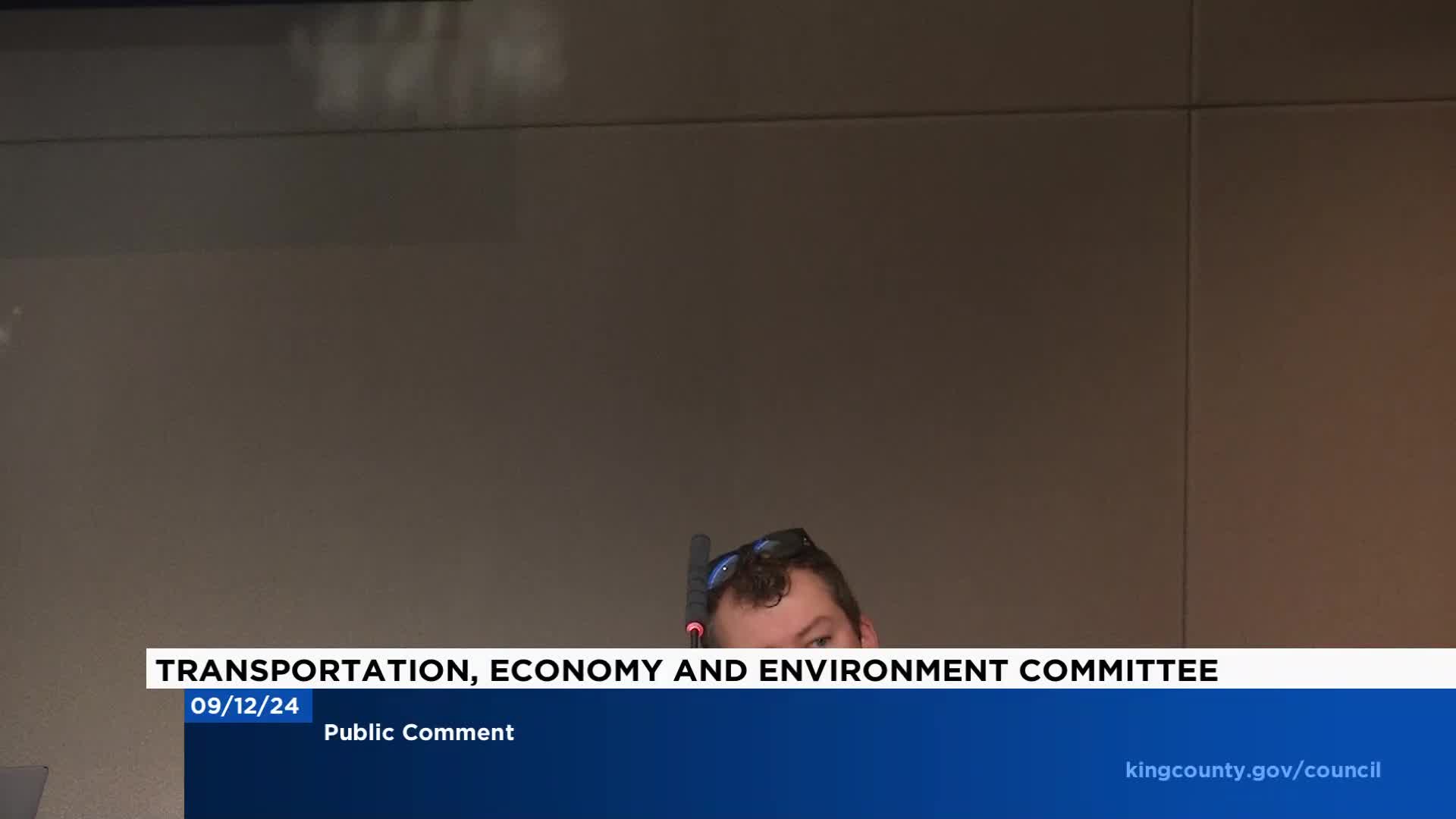Public transport crisis sparks urgent calls for safety reforms
September 12, 2024 | King County, Washington
This article was created by AI summarizing key points discussed. AI makes mistakes, so for full details and context, please refer to the video of the full meeting. Please report any errors so we can fix them. Report an error »

Public transportation in Seattle is facing increasing challenges, with riders reporting heightened fears of violence, harassment, and drug use. A recent study by the University of Washington revealed alarming levels of drug contamination, detecting fentanyl in 25% of air samples and methamphetamines in 98% of service samples on public transit. Advocates stress that improving safety on public transportation is crucial not only for rider security but also for reducing car pollution in the region.
During a recent government meeting, community members voiced their concerns about these issues. One speaker recounted a distressing encounter involving a child near a violent drug user on a bus, emphasizing the urgent need for enhanced safety measures.
In addition to public safety, discussions also centered around the impact of gentrification and displacement in King County. Friendly Vang Johnson, co-founder of a local youth leadership program, shared personal experiences of displacement and the struggles faced by communities of color. She highlighted the importance of equitable development to support vulnerable populations and ensure access to culturally relevant services.
JM Wong from Puget Sound Sage echoed these sentiments, urging the council to recognize the invisible suffering caused by gentrification and to provide funding for community-led initiatives. Aaron Clark, representing the Naa'i'ilahi Fund, called for support of projects aimed at returning native lands to indigenous communities, emphasizing the need for healing and belonging in the region.
The meeting underscored a collective call for action to address public safety, support equitable development, and foster a sense of community for all residents in King County.
During a recent government meeting, community members voiced their concerns about these issues. One speaker recounted a distressing encounter involving a child near a violent drug user on a bus, emphasizing the urgent need for enhanced safety measures.
In addition to public safety, discussions also centered around the impact of gentrification and displacement in King County. Friendly Vang Johnson, co-founder of a local youth leadership program, shared personal experiences of displacement and the struggles faced by communities of color. She highlighted the importance of equitable development to support vulnerable populations and ensure access to culturally relevant services.
JM Wong from Puget Sound Sage echoed these sentiments, urging the council to recognize the invisible suffering caused by gentrification and to provide funding for community-led initiatives. Aaron Clark, representing the Naa'i'ilahi Fund, called for support of projects aimed at returning native lands to indigenous communities, emphasizing the need for healing and belonging in the region.
The meeting underscored a collective call for action to address public safety, support equitable development, and foster a sense of community for all residents in King County.
View full meeting
This article is based on a recent meeting—watch the full video and explore the complete transcript for deeper insights into the discussion.
View full meeting
